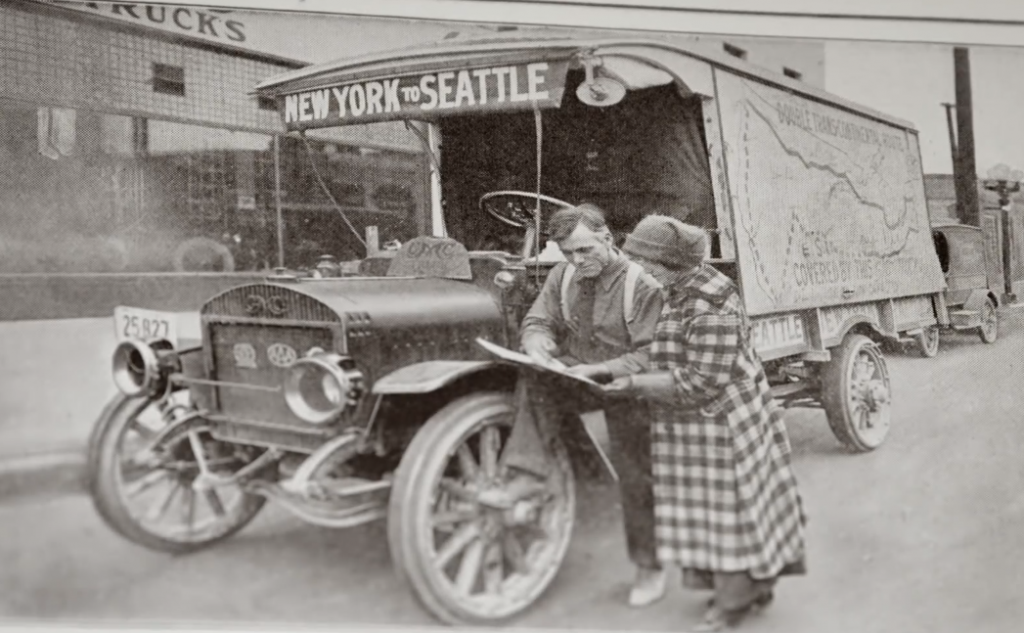
We really do take it for granted today. GMC has become so synonymous with American automotive strength that it’s easy to forget the manufacturer – like so many other twentieth century success stories – began with nothing more than a dream. In this case, the dream was shared by two brothers, who aimed to develop commercial trucks that could traverse every inch of the country.
At Casa Buick GMC, we have a deep admiration and respect for the historic building blocks that led us to GMC’s prestigious present. Today, we examine the early years of GMC, including their formation, acquisition, and wartime efforts.
The Formative Years: 1900 – 1912

Currently a division of General Motors, we’ve always associated GMC with the Detroit-based automotive manufacturing company. From 1911 to 1943, GMC was the General Motors Truck Company, and later operated as the GMC Truck & Coach Division from 1943 to 1998. But when the company was founded in 1900 by brothers Max and Morris Grabowsky, the GMC acronym stood for the “Grabowsky Motor Company.”
That original GMC name wouldn’t be long for this world. In 1902, the Grabowsky brothers built the Rapid: the first commercial truck operated in Detroit. Accordantly, they renamed their company the “Rapid Motor Vehicle Company.” Despite its rudimentary design, the Rapid caught the attention of Durant-Dort Carriage Company owner William Durant, who had previously overseen Buick’s ascension. Though the country didn’t realize it yet, Durant was constructing the architecture for what would become General Motors.
Durant purchased RMVC in 1909. Two years later, he also bought the Reliance Motor Car Company – another early commercial vehicle manufacturer. The two companies merged under Durant’s General Motors banner and changed their name to “General Motors Truck Company,” consolidating all GM truck production in Pontiac, Michigan and paving the way for the GMC we know today. By the time GMC made its debut at the New York Auto Show in 1912, drivers everywhere were craning their necks to witness the rise of America’s next great company.
Pressing on Through Wartime: 1914 – 1945

GMC’s momentum continued rolling into 1916, when commercial truck driver William Warwick loaded his wife and daughter into their 1.5-ton GMC truck and transported a shipment of Carnation Evaporated Milk from New York to Seattle and back. In doing so, GMC became the first truck to cross the country in under 32 days.
Unfortunately, World War I was well underway by then, and it had other plans for the young company. Like Buick, Ford, and the majority of American manufacturers, GMC put its domestic plans on hold and began shifting its focus towards producing military vehicles. By 1918, nearly 90% of GMC truck production was dedicated to military vehicles. In all, GMC provided the U.S. Army with over 8,500 vehicles throughout World War I – comprised mainly of troop carriers, aviation support vehicles, and ambulances.
The decades between wars proved fruitful for the enterprising company. In 1923, GMC trucks were sent overseas to Japan to aid the recovery and reconstruction effort following the Great Kanto earthquake. In 1926, General Motors began expanding into other modes of transportation, acquiring bus and taxicab manufacturer Yellow Coach and starting production on GMC buses. Yellow coach was rebranded as Yellow Truck & Coach Manufacturing Company, and all General Motors manufacturing operations were placed under it. In 1943, after purchasing the remaining interest in YT&CMC, GM renamed the company GMC Truck and Coach Division – which it would continue to be known as throughout the greater part of the century, until it was officially shortened to GMC in 1998.
When the United States joined World War II, GMC once more turned their attention to military vehicles. In contrast to the 8,500 vehicles they supplied to U.S. Armed Forces 20 years earlier, GMC would produce over 600,000 trucks for the war effort throughout World War II. After the war, GMC simply continued their work on expanded truck design they had begun in the 1930’s, which resulted in the company’s earliest SUVs: the GMC Suburban and GMC Yukon.
Become Part of the GMC Legacy Today
There’s so much more to GMC’s rich story that we’ll dive into another day: the introduction of the Sierra and the shift from commercial to personal use trucks in the 1960’s, GM’s rounded line truck series of the 1970’s, the sales explosion of the 1980’s, the Acadia’s debut in 2007… the list goes on.
For the time being, you can become a part of GMC’s history when you shop at Casa Buick GMC. From the 2024 Encore GX to the all-new Hummer EV, our inventory is loaded with the latest in new and pre-owned GMC trucks and SUVs. See for yourself how these vehicles pay homage to GMC’s past, while guiding it towards an exhilarating future.





